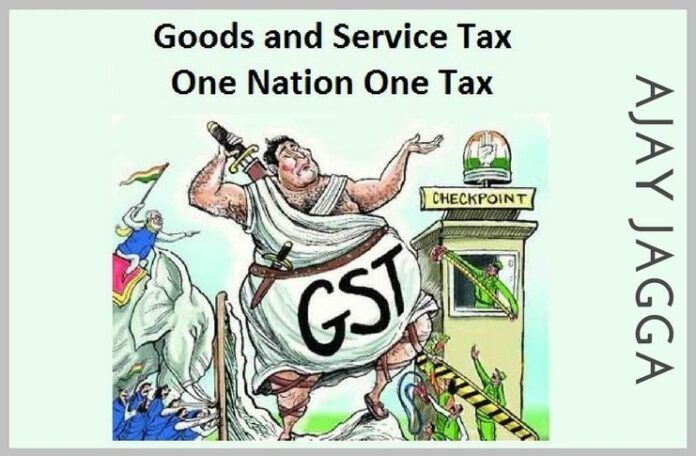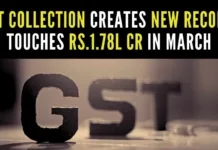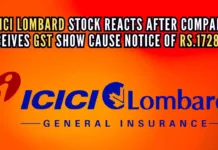
The whole system of GST is banking on GSTN infrastructure any error will halt the entire taxation system
[dropcap color=”#008040″ boxed=”yes” boxed_radius=”8px” class=”” id=””]T[/dropcap]he present taxation system of India provides for taxation of goods by States and taxable of services by the Centre and is quite different from dual GST(Goods and Service Tax). Taxes on goods, earlier known as Sales Tax was changed in 2005 and the VAT Law replaced the earlier law. The VAT system provides a system with input tax credit mechanism for taxation of goods. Similarly, services, respectively, with limited cross-levy set-off is levied after 1994 as Service Tax apart from this there is Central Excise Duty also levied by the centre on the manufacturing activity. So as such right from 1947 the parallel powers of the Centre (to levy a tax on services) and States (to levy a tax on goods) existing.
The Constitution was amended, whereas even without amendment, we could have amended the Concurrent list but a permanent solution was worked out by amending the constitution
And for last few years, there has been a debate in the country that our taxation system is complex, multilevel and not progressive. Moreover, we were having multiple rates of taxes on multiple schedules of items, the tax rates were 0, 0.5, 1, 2, 3, 4, 5,6, 8, 12.5, 13, 14, 26 and state cesses. So it was felt that we must have a simple taxation structure, which should be easy to understand and the classification problem should not be there, which at present is on a very high scale. For example, Fax is in electronic category and taxable at 12.5 % to 14%, whereas the computer is in information technology category and taxable @4% to 6%. The software is a good or service, this litigation is going on for decades without any end to it. Restaurants are levying Service Tax and VAT on same component and lot of litigation is going on many High Courts. A cable if used in fax is taxable @12.5% to 14% whereas a cable used in a computer is taxable @4% to 6%. So classification problem is there and endless litigation is going on, regarding the multiplicity of rates. Apart from this, there is Central Excise Tariff which too has many problems, on the rates of various items.
Further, the states were changing the rates accordingly to their own suitability which also created multiple slabs of taxes for example eatables are taxable @12.5% in Chandigarh, @13.25% in Haryana, 14.30% in Punjab and 5% in Himachal Pradesh. So lots of disparities are there.
[dropcap color=”#008040″ boxed=”yes” boxed_radius=”8px” class=”” id=””]S[/dropcap]o it was thought that a simple single tax is introduced in the country so that people should not have any problems in understanding the same. For example, Thailand is a country, who taxation system of Sales Tax is quite impressive and simple i.e. rate of sales tax is 7% and in Japan it is 8% flat, on all items.
So the Constitution was amended, whereas even without amendment, we could have amended the Concurrent list but a permanent solution was worked out by amending the constitution. Now after the introduction of Acts and Rules everybody started waiting for the tax rate slabs and now when the same is out the situation of coming legislation is as under.
[dropcap color=”#008040″ boxed=”yes” boxed_radius=”8px” class=”” id=””]W[/dropcap]e have Central GST Act, UT GST Act (for UTs without legislature like Chandigarh), IGST Act (for interstate sales), Compensation Act, 31 SGST (of States and UTs with legislatures like Delhi) multiple rules including migration, transition, registration, invoice, refund and so on. And now we have multiple tax slabs as 0%, 0.25%, 3%, 5%, 12%, 18%, 28%, 40% and the cess. Then we have economic criteria related to the rate of GST such as Footwear below 500 is taxable @ 5% and footwear above 500/- is taxable @18%. Similarly, apparels are taxable @ 5% if they are priced at Rs. 1000/- or below and taxable @ 12% if they are above. Then anti-profiteering clause, whose authority is yet to be seen, will cause havoc, as chances of escalation of prices cannot be ruled out. GSTN is already under suspicion due to foreign equities and access of the entire trade data to people sitting abroad. The confidentiality is the real victim. The whole system of GST is banking on GSTN infrastructure any error will halt the entire taxation system in the country.
Moreover the compensation formula will be acceptable in long run or not because under GST the manufacturing state gets no revenue, and in the beginning, whatever revenue it gets from sales will ultimately be transferred to consuming state. As such under GST, there is no incentive to manufacturing state.
As the chorus grows louder about the implementation of GST from 1 July 2017, one is unable to understand as to how can we say that we entering into a simple and progressive regime with 35 Acts, multiple rules and multiple tax slabs.
Note:
1. The views expressed here are those of the author and do not necessarily represent or reflect the views of PGurus.
- Mounting NPAs and keeping fuel outside GST is a bad financial strategy - September 4, 2018
- Flood relief for Kerala through GST - August 23, 2018
- Trafficking cultural property of India - June 8, 2018






One should not forget the plight of small traders,mom&pop stores etc who now have to put with the new system (though claimed paperless) learning curve,35+ returns in a year,fear of losing competitiveness to large sellers/bulk retailers etc?
Lot of campaign/awareness is done in TV/mass media on mitigating problems for SMEs,small retailers but this will not allay their fears of losing competitive edge and ending paying more taxes..
From a pure consumer/man on the street perspective also in the short run this GST is going to increase the prices in general in short term (in the long term no one is sure as well) and so CPI inflation is going to increase. Already no one has trust in the figures esp inflation in particular CPI data published by RBI.
This is a different issue, quite a genuine one, different from the thrust of the article.
There is very likely to be pain during the learning period. I’m an entrepreneur myself and I should know.
Sorry to say that it is these “real” issues which get silenced,diverted in today’s world of crony media which is purposefully kept hyper-jingoistic on one-side and on other extreme some other varieties which masquerade themselves as voice of people criticizing failures of present regime but eventually end up hijacking real issues with someother not so important ones.Sorry to say pgurus has become one like that and is a mere extension of Swamy twitter handle..
Swamy looks like a critic of present Govt policies but he eventually hijacks real economic issues or jumps the gun to divert real issues or make them get muted which is very dangerous. In other words Swamy,pgurus hijack real issues or dilute what is affectin man on the street issues to a point by often jumpin the gun or trying to be a effective opposition within the ruling party (this is very dangerous for healthy democracy) by subversion.
Note: You may not like me writing this and i expect pgurus to jump on me and say i am personal,offensive etc though i have always used very polite words.Period
If your comments are to be construed as genuine criticism, then comments about your criticism should also be construed the same way. How will the latter alone become ‘jumping on you’? If ‘jumping on you’ comment is true, then you’re jumping on others as well. Let’s be fair.
This article itself is extremely critical of the Government (though multiple tax rates is a collective decision of the Cnntre and all States), and PGurus has provided space for it. PGurus is a platform in that sense. I have commented on it, and the editors haven’t.
The editors have their views which they are voicing like everyone else does on this platform. There are criticisms of the editors’ views which are also published here.
Pray tell me, what do you think PGurus (or others like me) should do differently?
Imagine the kind of criticism the Government would have faced, if they had come up with just a single tax rate, say 18%. Everything from food, education, hospital, contraceptives, all kinds of clothing from low cost items to silk sarees, mobile phone (lowest cost to highest cost), LPG, coal, iron & steel, power, toiletries, capital goods, FMCG goods, consumer durables, cars (low end to high end), all kinds of services including construction, street corner food stall to 5 star hotels,… all at 18 (or whatever) %? Makes sense?